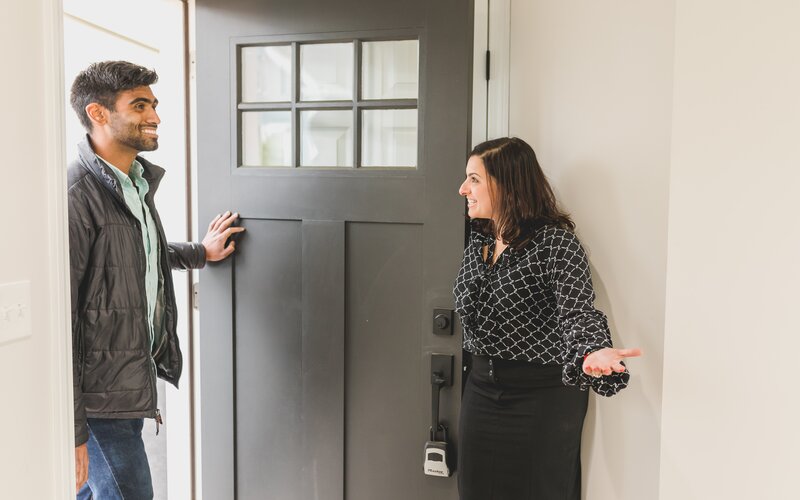It’s well documented the benefits and pitfalls of a 5% home deposit, with the cost of lenders mortgage insurance (LMI) one of the biggest pain points.
Where the First Home Loan Deposit Scheme (now referred to as the FHLDS or ‘The Scheme’) shines is that you can secure a home loan with only a 5% deposit and not have to pay LMI. Expectedly, it’s been popular, with first round spots gobbled up by first home buyers in just four months, with the Scheme estimated to support one in eight of all first home buyers at one point in 2020.
However, just because you can sign up to the FHLDS, does that mean you should?
Note: The First Home Loan Deposit Scheme has now been re-named to the Home Guarantee Scheme.
Buying a home or looking to refinance? The table below features home loans with some of the lowest interest rates on the market for owner occupiers.
| Lender | Home Loan | Interest Rate | Comparison Rate* | Monthly Repayment | Repayment type | Rate Type | Offset | Redraw | Ongoing Fees | Upfront Fees | Max LVR | Lump Sum Repayment | Additional Repayments | Split Loan Option | Tags | Row Tags | Features | Link | Compare | Promoted Product | Disclosure |
|---|---|---|---|---|---|---|---|---|---|---|---|---|---|---|---|---|---|---|---|---|---|
5.79% p.a. | 5.83% p.a. | $2,931 | Principal & Interest | Variable | $0 | $530 | 90% |
| Promoted | Disclosure | |||||||||||
5.74% p.a. | 5.65% p.a. | $2,915 | Principal & Interest | Variable | $0 | $0 | 80% |
| Promoted | Disclosure | |||||||||||
5.84% p.a. | 6.08% p.a. | $2,947 | Principal & Interest | Variable | $250 | $250 | 60% |
| Promoted | Disclosure |
Should I sign up to the FHLDS?
Buying a first home is a dream for many. It means no more putting up with renting, and it feels like you’re getting somewhere in life, while having a place to call your own. The FHLDS has merit, as the Government essentially acts as a guarantor on up to 15% of the property’s value, removing the need for LMI, which can add up to a hefty saving. However, you should consider also the pitfalls of the Scheme, not least of which is buying a home with a mere 5% deposit. Below are some considerations to make.
The hassle of LMI eliminated
LMI typically costs around 3-4% of the purchase price, which if looked at in an alternate reality, could have been used for the house deposit. The benefit of the FHLDS is that it eliminates that cost, enabling first home buyers to purchase a property with a ‘true’ 5% deposit.
This is potentially a huge benefit, according to Samuel Philipos, managing director at Benevolence Financial Group (BFG).
“[A] 5% deposit provides the opportunity for first home buyers to be able to purchase a property sooner with a reduction in costs to acquire the mortgage,” Mr Philipos said.
“Generally banks will lend up to 95% including lenders mortgage insurance (LMI). LMI is usually 3-4% of the purchase price approximately so in reality, the bank will lend max up to 91%-92% without LMI (remainder going to cover LMI).
“This means that borrowers in reality without an LMI waiver need an 8-9% deposit, plus pay thousands in LMI, which adds up to mortgage costs over the long term.”
With no need for LMI, as the Government acts as guarantor on up to 15% of the property value, the FHLDS could save a lot of hassle, but that’s not the whole story, as you’ll see below.
FHLDS restrictions
Caleb Gray, a buyers agent at Lid Property Group, outlined two tips for first home buyers to stay ahead on the FHLDS.
-
“Purchasing in a good area - Many house and land packages are in greenfield estate which lack scarcity and fundamental drivers for property growth. These properties are most at risk for declining in value rather than appreciating. Smart first home buyers purchase existing homes in established suburbs that contain future growth drivers.”
-
“Having a buffer - Even if your property does decline in value, these loses are not realised if you have a solid buffer of savings and are able to maintain mortgage repayments. This can also be used for a rainy day if you were made redundant. It is typically recommended that home buyers should have 3-12 months worth of expenses in savings.”
However, there is one main issue with the FHLDS: the Government wants you to use ALL your savings on the house deposit.
Saving 3-12 months' worth of expenses could mean you are ineligible for the Scheme. The Government’s website states: “The 5% must be made up of genuine savings. If you have 20% or more saved, then your home loan would not be covered by the scheme.”
In the capital cities, new builds that would fall under the property price thresholds (more on that later) would typically be in greenfield estates, far out of the city centre, as opposed to established suburbs closer to the CBD. Unless you’re willing to find a rare gem or dilapidated property close to the city to knock down, you’re likely going to have to look further out.
While it’s always handy and prudent to have an emergency fund built up, the FHLDS essentially wants you to pour this into your home deposit (if it’s under the 20% deposit cap) rather than save it for a rainy day. Additionally, some state and federal home building grants you access could also mean you’re ineligible for the FHLDS. Also, keep in mind that shares and other investments are typically considered genuine savings - so if you’re sitting on a deposit of over 20%, don’t think you can tie a lot of it up in stocks to qualify. Those hoping to game the system by securing the loan with a 5% deposit before suddenly “discovering” 15% to pour into the loan’s offset account are out of luck.
As the NHFIC (the scheme’s administrator) says in its guide to the Scheme: “…it is important that you do not try and disadvantage other Australians by seeking to change your circumstances just to take advantage of the Scheme. This includes where you have a 20% or greater deposit and legally transfer your cash and other assets in order only to access the Scheme…”
Don't be like that guy from Toy Story...

Source: Reddit
Higher mortgage costs and lender restrictions
Although borrowers can secure a home loan with a 5% deposit without paying LMI under the FHLDS, they’re still paying interest on 95% of the home’s value, as opposed to 80%.
Lower-deposit home loans also tend to attract a higher interest rate as the lender assumes more risk.
-
For example, CommBank currently offers its 'Extra Home Loan' with a variable 2.69% p.a. (2.70% p.a. comparison rate*) for borrowers with a maximum LVR of 80% i.e. a 20% deposit.
-
The same home loan for borrowers with an LVR of more than 80% has an interest rate of 3.13% p.a. (3.14% p.a. comparison rate*).
Figures were correct as of November 2020.
However, Lendi executive David Smith says the scheme’s lenders promise they won’t charge FHLDS borrowers higher rates than similar borrowers not using the scheme.
“While participating lenders may apply their own additional criteria for loans offered under the Scheme, such as restrictions on certain properties or suburbs, all participating lenders have committed not to charge eligible first home buyers higher interest rates than equivalent borrowers outside of the Scheme,” he said.
Nevertheless, a borrower with a 20% deposit is hardly equivalent to a borrower with a 5% deposit.
- If you wanted to buy a $600,000 home, and borrowed $480,000 (80%), the total cost of the loan principal and interest rate of 2.69% would be $699,961, for a monthly repayment of $1,944.
- Compare that with a 5% deposit on the higher interest rate (borrowing $570,000), and you'd pay $879,585 in total, for a monthly repayment of $2,443.
This also doesn't take into account any interest rate changes over time, as well as any monthly account keeping fees, account establishment fees and so on.
Using the ‘30% guide' to determine mortgage stress, a 5% deposit would mean you would ideally earn over $98,000 gross, as opposed to the 20% deposit where you'd ideally earn over $78,000. So to ‘afford’ the lower deposit means you’d ideally need to earn more - go figure.
Getting it right
Founder of the Australian Housing Initiative Ian Ugarte highlighted a couple of issues with the FHLDS.
“The first issue is that with so much stimulus going towards new housing, there’s an increasing likelihood that first home purchasers will be young people who are going to be purchasing in ‘greenfield’ sites, new development sites with an abundance of land, which aren’t likely to realise much capital growth, if any,” Mr Ugarte said.
“Not only that, these first home buyers will be paying interest on a 95% loan, rather than typically saving for a deposit of 20% and taking out a loan for the remaining 80%, which might be manageable for first home buyers while interest rates remain as low as they are now.
“However, all it would take is a slight increase in interest rates and those same people might begin to struggle to afford to repay their loans and hold onto their homes.
“On the upside, I agree that everyone deserves an opportunity to purchase a home, and this is a way to help first home buyers get a foot in the property market.”
Founder of Reventon Finance, Billie Christofi, echoed these sentiments.
“I believe borrowers should take advantage of the current grants and interest rates and get into the market while these opportunities are available. It’s very important that you do your numbers and have buffers in place to allow for market changes and expenses,” she said.
“Buying property in the right areas will see more growth than holding off and saving money in your account - it’s better to take advantage of these opportunities and get in the sooner you can.”
While capital gains are not guaranteed - property is, after all, an investment as well as a place to live - buying in the right area could see better capital gains in the long term than the wrong area.
The ‘FOMO’ factor
The balance of capital gains versus saving up for a deposit to lower mortgage costs creates a ‘fear of missing out’ phenomenon, as traditionally capital gains have been strong among capital city markets.
This weighs heavily on first home buyers, according to BFG’s Mr Philipos.
“The support from the government with the scheme is direct action to address housing affordability. We have clients that would have had to delay their plans by 2-3 years without LMI waiver and the fear that by then - property prices would have increased even more drastically,” he said.
“It becomes a cycle in which when the savings increase, property prices have increased at a much higher rate.
“Reducing extra mortgage costs and government fees that are applicable during the purchase means borrowers, particularly millennials and now Gen Z, can get their foot in the market without being left behind.”
Lendi's Mr Smith also highlighted the ‘FOMO’ factor.
“When it comes to the property market, the biggest cost could be delaying your decision to get into the market,” he said.
“You might discover you can get into your own home sooner than you thought.”
Contingent on capital gains
While strong capital gains in the capital cities have led to ‘FOMO’, past performance is not always an indicator of future performance.
Lid’s Mr Gray highlighted a case study where the FHLDS could be useful.
“If you have purchased with a 5% deposit, from there on the property does the heavy lifting of saving for you. If the $600,000 purchase grows at 7%, then in 10 years' time your property will be worth over $1,000,000,” he said.
“I know that I would rather be paying off my own mortgage (especially when interest rates are so cheap) rather than paying rent and helping pay down someone else's mortgage.”
Owing more on your property than it’s worth is called ‘negative equity’. Of course, this is only a ‘paper loss’ rather than a realised loss. Nonetheless, this is why it’s important to buy in the right area and do all your checks and balances, which is admittedly true for any property.
FHLDS property price caps
The most recent openings for new builds saw the caps raised almost across the board. The price caps are now:
|
Region |
'New Home Guarantee' property price cap |
|
NSW – Capital City and Regional Centre |
$950,000 |
|
NSW – Other |
$600,000 |
|
VIC – Capital City and Regional Centre |
$850,000 |
|
VIC – Other |
$550,000 |
|
QLD – Capital City and Regional Centre |
$650,000 |
|
QLD – Other |
$500,000 |
|
WA – Capital City |
$550,000 |
|
WA – Other |
$400,000 |
|
SA – Capital City |
$550,000 |
|
SA – Other |
$400,000 |
|
TAS – Capital City |
$550,000 |
|
TAS – Other |
$400,000 |
|
Australian Capital Territory |
$600,000 |
|
Northern Territory |
$550,000 |
|
Jervis Bay Territory & Norfolk Island |
$600,000 |
|
Christmas Island & Cocos (Keeling Island) |
$400,000 |
Source: NHFIC.gov.au
Participating lenders
There are 32 total lenders participating in the Scheme - two majors, and 30 non-majors.
Major bank lenders:
- National Australia Bank
- Commonwealth Bank of Australia
Non-major lenders:
- Australian Military Bank
- Auswide Bank
- Bank Australia
- Bank First
- Bank of us
- Bendigo Bank
- Beyond Bank Australia
- Credit Union SA
- Community First Credit Union
- CUA
- Defence Bank
- Gateway Bank
- G&C Mutual Bank
- IMB Bank
- Indigenous Business Australia
- Illawarra Credit Union
- Mortgageport
- MyState Bank
- Newcastle Permanent
- People’s Choice Credit Union
- Police Bank (including the Border Bank and Bank of Heritage Isle)
- P&N Bank
- QBANK
- Queensland Country Credit Union
- Regional Australia Bank
- Sydney Mutual Bank and Endeavour Mutual Bank (divisions of Australian Mutual Bank Ltd)
- Teachers Mutual Bank Limited (including Firefighters Mutual Bank, Health Professionals Bank, Teachers Mutual Bank and UniBank)
- The Mutual Bank
- Unity Bank
- WAW Credit Union
Frequently asked questions
Can the First Home Loan Deposit Scheme be combined with other government incentives?
First home buyers can use the scheme in conjunction with other first home buyer assistance available from state and territory governments, however you run the risk of going over your '5% deposit' depending on the grant.
The First Home Owners Grant (FHOG) is a national scheme which differs in each state and territory and in most places applies to new homes only.
How do I apply for the First Home Loan Deposit Scheme?
Prospective first home buyers can submit applications directly through the participating lender of their choice.
The NHFIC will not be accepting applications directly.
Who is eligible for the First Home Loan Deposit Scheme?
Only Australian citizens (not permanent residents) are eligible for the scheme.
An income threshold will apply. Singles with a taxable income of up to $125,000 a year, and couples with a joint income of $200,000 are eligible provided it’s their first home loan and they are both first home buyers.
Couples must be married or in a de facto relationship. Other people buying together such as friends, siblings, parent/child and so on cannot apply for the scheme together.
Applicants must have at least 5% of the value of the property saved. Applicants also must intend to buy the property and move into it as their primary place of residence (so they must be owner occupiers, not investors).
If you’re still unsure, you can take a quick quiz on the NHFIC’s website to see if you’re eligible for the scheme.
Will first home buyers pay a higher interest rate under the scheme?
Not according to the NHFIC, which states participating lenders in the scheme will not charge eligible customers higher interest rates than those not participating in the scheme.
It’s worthwhile keeping in mind that taking out a home loan with a smaller deposit means paying interest on a larger amount of money, which could make the loan significantly more expensive.
What types of property can I buy under the First Home Loan Deposit Scheme?
According to the NHFIC, an eligible first home buyer can purchase any of the following property types under the scheme:
- A new or existing house, townhouse or apartment
- A house and land package
- Land together with a separate contract to build a home
- An off-the-plan apartment or townhouse
Savings.com.au's two cents
The FHLDS provides another useful leg-up to first home buyers struggling to put together a deposit. On a $600,000 home, LMI could potentially cost in excess of $20,000, and the Scheme eliminates that. Ultimately, borrowers are still paying interest on 95% of the home’s value as opposed to the usual 80%. This could add up to thousands of dollars extra in interest over the life of the loan - borrowers will need to weigh that up with any potential capital gains made by entering into the market sooner.
The Scheme also has one rather large restriction that borrowers may not have considered. The Scheme wants you to use all your savings - such savings could prove useful down the track if home loan interest rates rise. However, at the end of the day, first home buyers need a place to live when renting isn’t cutting it anymore - the FHLDS allows them to achieve their ‘Australian dream’ sooner, which is admirable in itself.
Article first published 4 November 2020, last updated 8 October 2021.
Photo by Nicolas Gonzales on Unsplash

Ready, Set, Buy!
Learn everything you need to know about buying property – from choosing the right property and home loan, to the purchasing process, tips to save money and more!
With bonus Q&A sheet and Crossword!






 Harry O'Sullivan
Harry O'Sullivan

 Denise Raward
Denise Raward
 Brooke Cooper
Brooke Cooper
 Emma Duffy
Emma Duffy

